Sony has announced its 2024 TV lineup, with a range that consists of four new Bravia models, including its new flagship product featuring Mini-LED technology, a new OLED flavor and an entry-level direct LED set. In addition, the company said some of its existing TVs, including the popular Sony A95L QD-OLED TV, will continue into 2024.
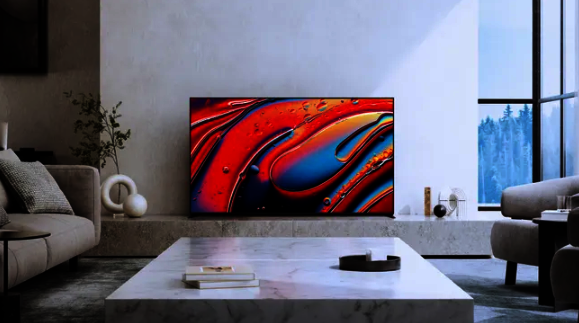
Just as it did last year, Sony declined to use the annual Consumer Electronics Show in January as the launchpad for its latest generation of TVs, instead holding off several months before revealing them at a dedicated media event.
The new Sony 2024 TVs follow a new and simpler naming convention that’s based around its traditional Bravia brand, with this year’s flagship being the Mini-LED-powered Sony Bravia 9 that’s said to offer 325% more local dimming zones than last year’s highest-end Mini-LED TV, the Sony X95L. Sitting below that is the Bravia 8 OLED TV, which is the successor to last year’s Sony A80L, featuring an advanced WRGB OLED panel supplied by LG Display. There’s also another Mini-LED model known as the Bravia 7, and a direct-lit LED TV called the Sony Bravia 3 that will serve as this year’s entry-level model.
All of the new TVs come with a four-way stand, except for the Bravia 3, which only sports a single-position stand, plus a new Narrow Soundbar option, support for Dolby Vision and Dolby Atmos, and a new Prime Video collaboration picture mode that quickly calibrates the picture and sound settings for any Amazon Prime Video movie or show.
With those introductions out of the way, let’s take a closer look at Sony’s 2024 TV offerings:
The Sony Bravia 9 (Mini-LED)
This year’s premium 4K model is no longer based on QD-OLED or even WRGB OLED display technology, with the company instead reverting back to Mini-LED technology. The Sony Bravia 9 will be sold in 65-, 75- and 85-inch sizes with prices starting at $3,299 for the smallest model, and maxing out at $5,499 for the largest version.

Sony first revealed it’s switching back to Mini-LED as its primary display technology of choice late last year, citing some significant advances in picture quality. The Bravia 9 is said to be twice as bright as last year’s premium Sony X95L Mini-LED model, and features a new, 22-bit Mini-LED driver that enables the increased brightness and a higher density of local dimming zones, plus a feature called High Peak Luminance that enables “OLED-level blacks” and higher contrast.
Like last year’s flagship Mini-LED, the Sony Bravia 9 supports Dolby Vision HDR and offers studio calibration modes from Netflix and Sony Pictures, plus the new Prime Video calibrated mode, which not only optimizes the picture settings for any show, movie or sports content, but also adjusts the level of brightness according to the ambient light in the room.
It should be an excellent TV for gamers, with support for 4K at 120Hz, VRR and ALLM on board, plus the Sony Game Menu, Auto Tone Mapping and other Perfect for PS5 features that were found on last year’s models. On the downside, it only features a pair of HDMI 2.1 ports, which falls short of other flagship TVs this year.
Sony’s TVs are known to excel in terms of audio, and the Bravia 9 keeps up this tradition with an all-new 2.2.2 channel speaker system that boasts Acoustic Multi Audio+ technology. The built-in speakers also add two new beam tweeters that sit atop of the TV to direct more spacious sound. Voice Zoom 3 is a new feature that helps to enhance dialogue, while Acoustic Center Sync enables the TV to be used as the center speaker when it’s hooked up to a Sony soundbar.
The Sony Bravia 8 (WRGB OLED)
Moving on, Sony also announced its sole OLED model this year in the shape of the Sony Bravia 8, which will be available in 55-, 65- and 77-inch flavors. It has many of the same features found on last year’s Sony A80L OLED TV, but it’s said to be 10% brighter than that model, with its peak brightness being stretched to 900 nits, the company said. That puts it in the same ballpark as LG Electronics’ new C4 OLED TV.
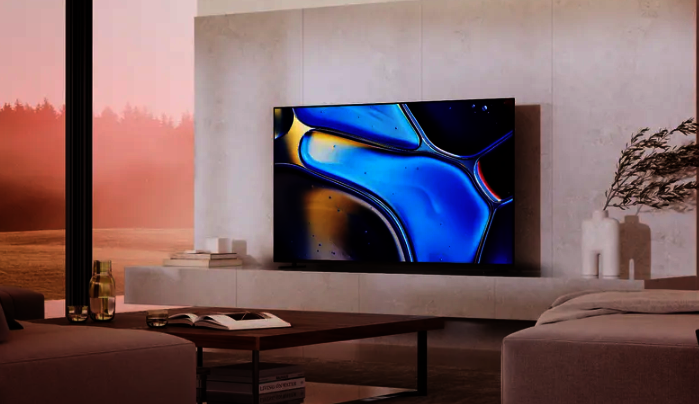
Prices will start at $1,999 for the 55-inch model, rising to $3,899 for the 77-inch version. The TV will offer many of the features described found on the Sony Bravia 9. including Prime Video Calibrated Mode, Voice Zoom 3, Dolby Vision, Dolby Atmos, 4K 120Hz and VRR via its two HDMI 2.1 ports.
The design of the Sony Bravia 8 has been enhanced too, with this year’s model said to be 31% thinner and sporting a 29% slimmer bezel compared to the A80L OLED TV. It comes with Sony’s chargeable Eco remote, which is made from 80% recycled materials.
The Sony Bravia 7 (Mini-LED)
Sony’s step-down Mini-LED, the Sony Bravia, is the spiritual successor to last year’s popular Sony X90L. The addition of Mini-LED is a significant step up in picture quality, with the X90L featuring a full-array LED display. With Mini-LED, it means the Bravia 7 gets many more local dimming zones and can achieve much higher brightness. According to Sony, it is 790% brighter than the X90L, though it doesn’t reach the same heights as the Sony Bravia 9.
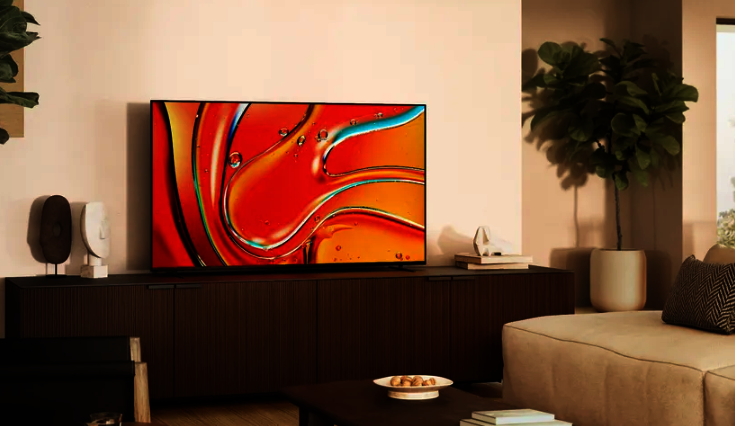
Once again, it has many similarities with the Sony Bravia 9, with features including Dolby Vision, Dolby Atmos and DTS:X support, Prime Video Calibrated mode and Voice Zoom 3. It also provides advanced gaming features such as 4K 120Hz, VRR, ALLM and Game Menu.
The main difference between the Bravia 9 and the Bravia 7 is that the latter model doesn’t have the High Peak Luminance technology onboard, hence the reduced brightness and dimming zones.
Buyers will have four size options to choose from, with the Bravia 7 coming in 55-, 65-, 75- and 85-inch varieties, with prices ranging from $1,899 to $3,499 at launch.
The Sony Bravia 3 (Direct-lit LED)
This year’s entry-level model is the direct-lit LED display Sony Bravia 3 model, which will be sold in the widest range of sizes. According to Sony, there will be 43-, 50-, 55-, 65-, 75- and 85-inch models available, but these TVs won’t deliver anything like the same kind of picture and sound quality as the above offerings.
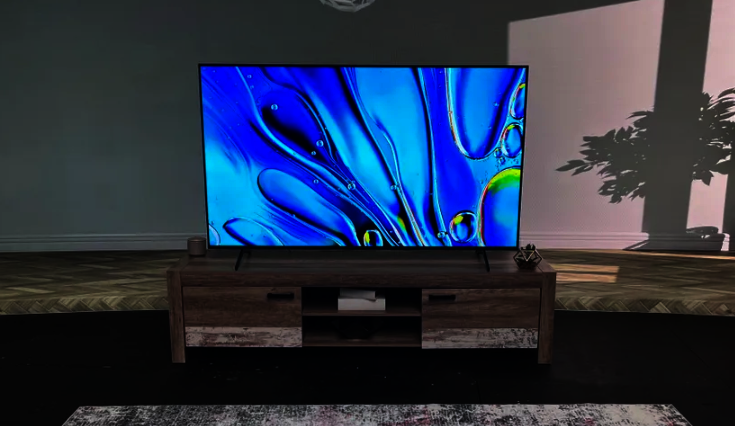
Features they do have include Dolby Vision, Dolby Atmos and the new Prime Video Mode, and support for some Perfect for PS5 capabilities, including the Game Menu and ALLM. But the refresh rate is limited to just 4K at 60Hz, and there’s no support for VRR.
On the other hand, the Sony Bravia 3 TVs are certainly much more affordable, with the smallest 43-inch model starting at $599, rising to $1,799 for the 85-inch version.
What happened to QD-OLED?
Sony TV enthusiasts will likely recall that it was not Mini-LED, but rather Samsung Display’s QD-OLED display technology that sat at the heart of the company’s 2023 flagship TV model. With Samsung Electronics recently unveiling its newest Samsung S95D QD-OLED Model (confusingly marketed as just “OLED”), some may be wondering why the Japanese brand has declined to offer any new QD-OLED models this year.
The reason, according to Sony, is that the Sony A95L only went on sale fairly late last year, and so it’s still very early in the lifespan of that model. As such, the company saw no need to offer a more advanced version, and the A95L will remain on sale throughout 2024.
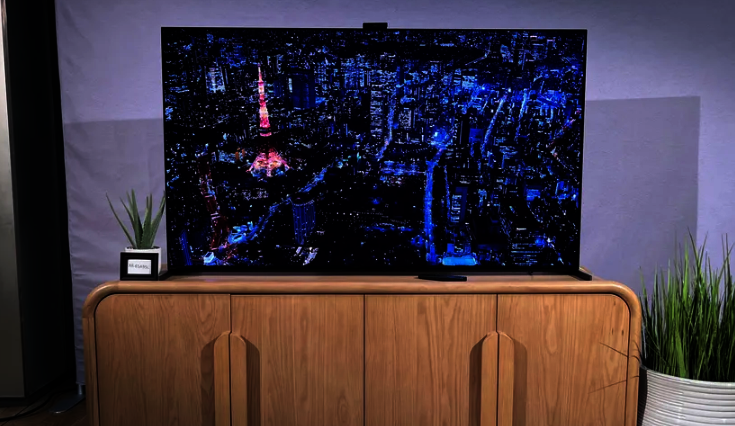
At least, that’s the official line, but it doesn’t exactly bode well for the future of QD-OLED. With Sony effectively dropping the technology this year, it only adds fuel to the rumors that Samsung Display is scaling back its interest in QD-OLED and will no longer expend much effort on advancing that technology. But of course, nothing official has been announced, so this remains speculation.
Just as interesting is that Sony has decided to continue to sell its popular A90K TV, which debuted two years ago. The A90K uses a much older WRGB OLED panel, having first launched back in 2022. But it’s still a very good, compact TV by most standards, and the advantage is that it’s available in much smaller 42- and 48-inch sizes, making it an excellent choice for smaller living rooms and bedrooms, perhaps.
In addition to the Sony A90K, the Sony X90L LED TV from last year will also carry on through 2024, as do the mid-range and entry-level X85L, X80L and X75 LED TVs. Sony didn’t discuss prices for these continued models, but hopefully buyers will get a discount on last year’s prices.
Check out this video for more info on Sony's 2024 TVs: